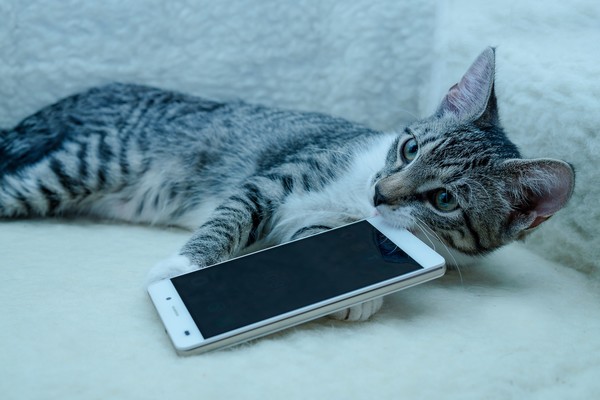The quest to understand animals

IT HAS been several years since human speech recognition was implemented into household items; now, developers are applying this technology to animals with the hopes of being able to communicate with them. This resulted in the emergence of various apps which advertise the ability to translate animal speech, leaving consumers wondering whether their programs are supported by solid scientific evidence. One such app, MeowTalk, claims to be able to translate what cats “say” and has gained immense popularity among the community of cat owners, boasting over 17 million downloads since its launch in 2020. However, due to the complexity of deciphering animal vocalizations, the reliability of these apps is still up for debate.
The world’s first cat translator
Speech recognition technology has already been in the market for years, with the launch of devices like Siri and Alexa. In Alexa’s case, Automatic Speech Recognition (ASR) is utilized to convert the audio waveforms into words by recognizing the sound patterns of a user’s speech[1]. Javier Sanchez, the founder of MeowTalk, worked at Amazon as a developer for Alexa for over a year and believed that similar technology could be applied to translate the vocalizations of cats. If successful, the app would be incredibly helpful for individuals who dream of being able to, one day, communicate with their pets.
The app uses machine-learning algorithms to analyze and decipher patterns in the database of millions of pre-recorded feline vocalizations. By analyzing the characteristics of these vocalizations, such as changes in tone and pitch, the algorithm is able to detect distinct patterns that are found across many different samples. MeowTalk does not provide word-for-word translations, but instead categorizes these feline vocalizations into 11 “intents.” Such “intents” include mating, hunting, defense, angry, attack, mother call, in pain, give me attention, resting, warning, and content[2]. As shown by research, there are numerous sounds that are commonly emitted by cats to indicate the same mood. For example, chattering—a stuttering sound made through motion of the jaw—indicates that the cat’s hunting instincts have been activated. When a cat purrs—low steady vibratory sounds—it usually indicates its contentment[3]. The app claims that as users continue to use the app and provide feedback on their satisfaction with the interpretations, the algorithm will accumulate data and improve its accuracy. Eventually, the algorithm is supposed to become specifically geared to analyzing the vocalizations of one’s pet, thus increasing the accuracy of the translations[2].
Initially, users had to manually activate the microphone to record their cats’ vocalizations, but a new feature was launched in 2021 where they could set the app on “MeowRoom” mode. This mode allows the device to constantly monitor for sounds, meaning that every vocalization made by the cat can be captured automatically. However, while the MeowRoom mode is only supposed to detect feline vocalizations, reviews indicated that there were frequent occurrences of error due to the app mistakenly registering non-feline sounds as well[4].
Limitations of the technology
As a relatively new field of study, there is skepticism surrounding the scientific legitimacy of this app. For one, cats do not share a common “language” with each other like humans. Research indicates that both genetic and environmental factors affect feline vocalization development. Therefore, each cat may express themselves through different vocalizations depending on factors such as age, gender, and social exposure[3]. This prevents apps like MeowTalk from being able to automatically pinpoint the exact meaning behind each cat’s vocalization. As a result, the accuracy of these programs would largely have to rely on the accumulation of data. However, compared to the accumulated data available for human speech recognition, the data for feline vocalizations remains relatively scarce[5]. Although the app has a feature where you can add your own interpretation of your cat’s vocalizations—allowing the app’s recognition software to build upon its own database—such approach assumes that users are correct about their own subjective interpretations, which, if they are indeed accurate, questions the need for the app in the first place.
The reality is that many owners will not know exactly what their cats want to communicate to them. With humans’ limited hearing capability, owners may not be able to differentiate between the different vocalizations[3]. While some vocalizations are easy to identify, such as purring, others are not so straightforward. For example, “chirps” and “tweets” of cats are near indistinguishable in sound despite communicating different intentions; whereas tweets occur when cats desire something, chirpings are produced when they try to locate other cats or, in the case of females, when they approach their nesting area. Even categorizing vocalization samples is complicated for researchers because of the variability in pitch, intensity, and duration between cats[3]. Additionally, same vocalizations can occur in different contexts. The meowing of cats has been found to be produced in various situations, such as when cats are socially interacting, are in reproductive phases, or when they are trying to locate other cats[3]. If researchers who have studied the spectrograms of cats’ vocalizations are unable to pinpoint the meaning behind their sounds, it will be near impossible for untrained ears to distinguish one “meow” from another[3].
* * *
Significant advancements are being made in the field of machine learning and speech recognition software as algorithms continue to improve[6]. The understanding of animal communication has also become more comprehensive in the past few decades as scientists started using machine learning for their research projects[7]. However, seeing that pet translation technology is still at its preliminary stage, there still seems to be a long way to go before it can accurately and effectively facilitate communication between humans and their animal companions.
[1] Alexa Developer
[2] MeowTalk
[3] Feline vocal communication
[4] Google Play Store
[5] Domestic Cat Sound Classification Using Learned Features from Deep Neural Nets
[6] Forbes
[7] The New York Times

